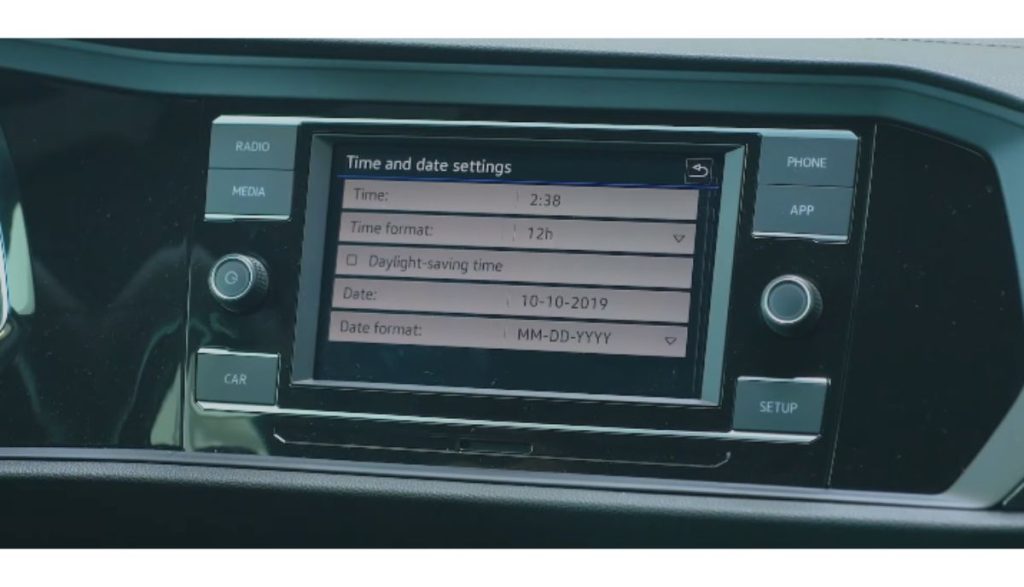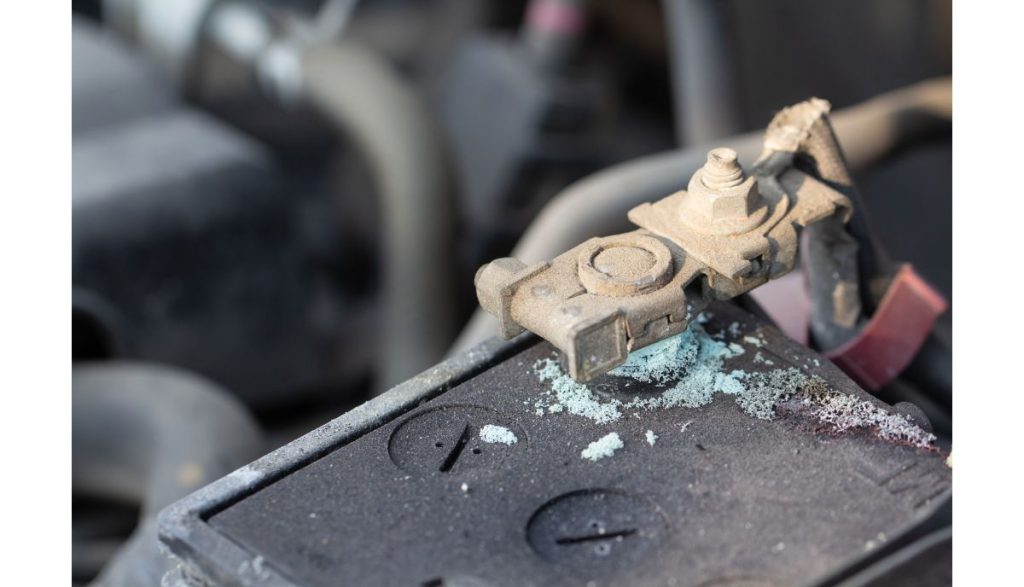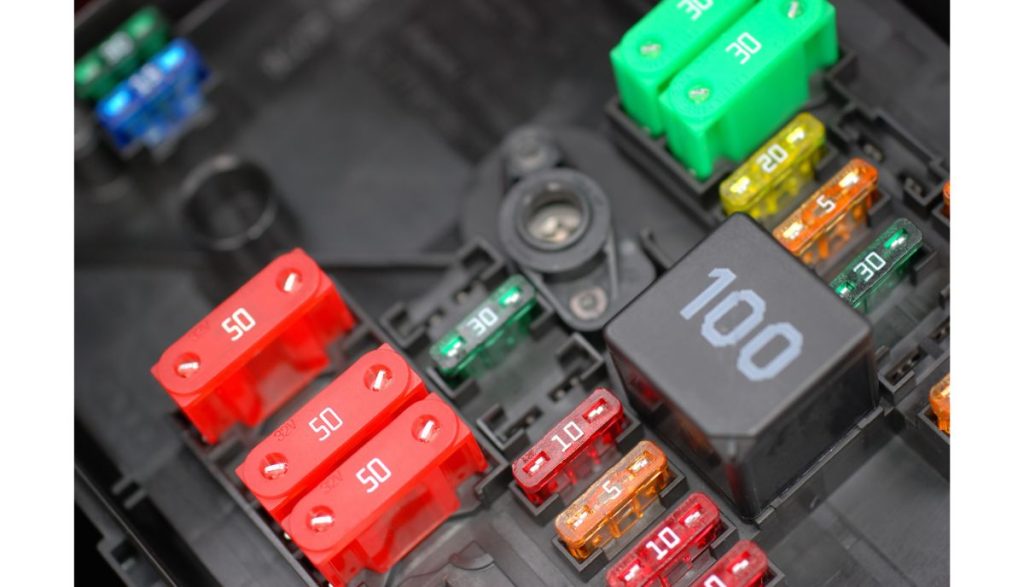The first car clock was no different from a pocket watch. It was made by conventional clock manufacturers. Classic Car Clock has pictures of the Waltham Automobile Clock. You could only trust it to keep you apprised of the time if you remembered to wind it up every Sunday.
Clocks in modern VWs are self-sustaining and far more reliable. If yours keeps resetting, something has gone wrong. You can blame one or more of the following:
1). Daylight Savings
Does your car have a GPS? This matters because many countries have Daylight Savings Time, a system that moves an hour from the morning to the evening to give you more daylight.

Older vehicles expect you to adjust the clock manually to account for daylight savings. Modern cars use GPS to adjust the clock to daylight savings time automatically.
If you’re unaware of daylight savings and its impact on clocks, you may assume your car’s clock is continually resetting.
How To Fix?
Turn the daylight savings option off and adjust the clock manually whenever needed.
2). Software Glitch
Like most brands, VW cars are vulnerable to software errors. In fact, the Verge wrote an article in 2022 detailing the many software glitches plaguing Volkswagen’s line of electric vehicles.
Customers complained about buggy infotainment screens and unreliable smartphone connections. The malfunctions compelled Oliver Blume (VW Group CEO) to revise the company’s software strategy.
This is important because VW wants to become a ‘sustainable software-oriented mobility provider’ by 2030.
An ARS Technica article from June 2023 highlighted a VW recall necessitated by numerous software glitches. In that particular case, VW’s primary concerns were the battery management and pulse inverter control modules.
But just because your vehicle was not included in that recall doesn’t mean you can rule out factory defects as a potential cause for a retting clock. Talk to your dealership about the issue. Let them reach out to VW for clarification.
If the fault originates from a factory defect, they may fix the problem for free or provide adequate compensation.
How To Fix It?
- Reset the computer by disconnecting the battery.
- You can achieve a similar objective by unplugging the fuses.
- Consult the manual for additional instructions if your vehicle uses unique reset procedures.
- Use an OBD2 Scanner to identify the fault.
You are unlikely to fix the software error yourself. Take the car to a mechanic and let them resolve the problem.
3). Damaged Battery
The battery is your VW’s primary power source. It provides a steady stream of electricity for components like the clock.
What happens when the battery fails? The disruption in power will reset the clock. The other meters on the dashboard will also reset. But how do you know the battery is at fault when so many defects can reset the clock? A bad battery will manifest the following symptoms:
- The headlights will dim because they don’t have enough power.
- The engine will crank slowly because the battery is weak. The alternator runs the electronics, but it can’t start the car.
- Electronic windows may stop working.
- Heated seats won’t come on.
- You may hear clicking when you turn the key in the ignition.
- A visual inspection will reveal a warped battery case.
Car batteries last three to five years. But conventional wear and tear are not the only causes of bad batteries. Open the hood and look for corroded connectors.

Do you see blue-green powder on the terminals? What about the smell of rotten eggs? This Concordia University guide blames the scent on a colorless, flammable, toxic gas (Hydrogen Sulfide) that manifests when you overcharge a vented lead acid battery.
What about the alternator? Between the battery and alternator, how can you identify the faulty component? After all, the alternator runs the car’s electronics. It will also charge the battery. A healthy battery will drain and reset the clock because the alternator is defective.
Unfortunately, these two components attract similar symptoms when they fail. Therefore, you may blame dimming headlights and malfunctioning electronics on the battery when the alternator is the problem. You can test alternator in following ways
- Start the engine (You need the battery to start the car).
- Disconnect the battery (You don’t need the battery to keep the car running).
- If the engine keeps running in the absence of the battery, the alternator is fine. It produces sufficient voltage. If the engine falters, the alternator is defective.
How To Fix It?
- Replace a dead or damaged battery.
- Clean corroded battery terminals.
- If you live in a cold region, use heaters and warmers to protect the battery from extreme temperatures. According to Firestone Complete Auto Care, a battery loses 60 percent of its strength at 0 degrees F. If you don’t have a heater, park the car in a garage. Don’t leave it out in the cold.
- Replace a bad alternator. This assumes that you’ve tested the alternator. You may replace the alternator when the battery is the problem or vice versa. If you have doubts, visit a dealership.
4). Blown Fuse

The fuse protects a circuit from excess current. Electricity cannot flow when a fuse blows. This is good because it defends against surges. It becomes an inconvenience when the fuse blows for no reason. The following symptoms will tell you that a fuse has blown:
- Electric windows won’t work.
- The radio will stop.
- Don’t expect the windshield wipers, headlights, and other electronics to run.
- The car may refuse to start.
- Burning smell.
- Some cars will flash a warning light on the dashboard.
- A visual inspection will definitively prove that a fuse has blown. Look for a broken filament.
- Some blown fuses will melt or manifest external burn marks.
- If the fuse looks healthy, a circuit tester may prove otherwise. The device looks for continuity.
It is worth noting that manufacturers assign separate fuses to different sections of the circuit. This is why the fuse box has so many fuses. Use the manual to identify the fuse that controls the clock’s fuse. A fuse can fail for one or more of the following reasons:
- This paper from Ismael Cordero in the Community Eye Health Journal has noted that blown fuses are not necessarily a sign of trouble. Rather, these components degrade over time. A fuse may last ten or more years. But eventually, it will fail.
- The circuit’s electrical demand can exceed the fuse’s capacity. The fuse will blow because of the surge. The filament will burn.
- Some people undersize fuses.
- A short circuit can destroy a fuse.
- A jarring impact can break the fuse.
How To Fix It?
- Start by finding the clock’s fuse in the box and inspecting it. Some VWs use one fuse for the entire instrument cluster, including the clock.
- Fuses are inexpensive. You can buy a set for a few dollars. The rating of the new fuse should match the old one. Don’t oversize or undersize the fuse.
- Needlenose pliers will simplify the process of retrieving and inserting the fuse.
- If the new fuse blows, inspect the circuit for frayed wiring. Exposed conductors can cause short circuits when they touch metal surfaces.
- If the fuse only blows when specific electronic devices turn on, troubleshoot those devices.
On the surface, a fuse is a simple problem with a straightforward answer. But that is only true if you know where to find the fuse box. After all, fuses are cheap, and you can replace one in mere minutes.
However, if each new fuse blows, a mechanic may charge you hundreds of dollars to scrutinize the electrical system until they identify the fault. They will also check the dashboard and the clock for frayed wiring and damaged components. The more work they need to do, the more money you will pay.

